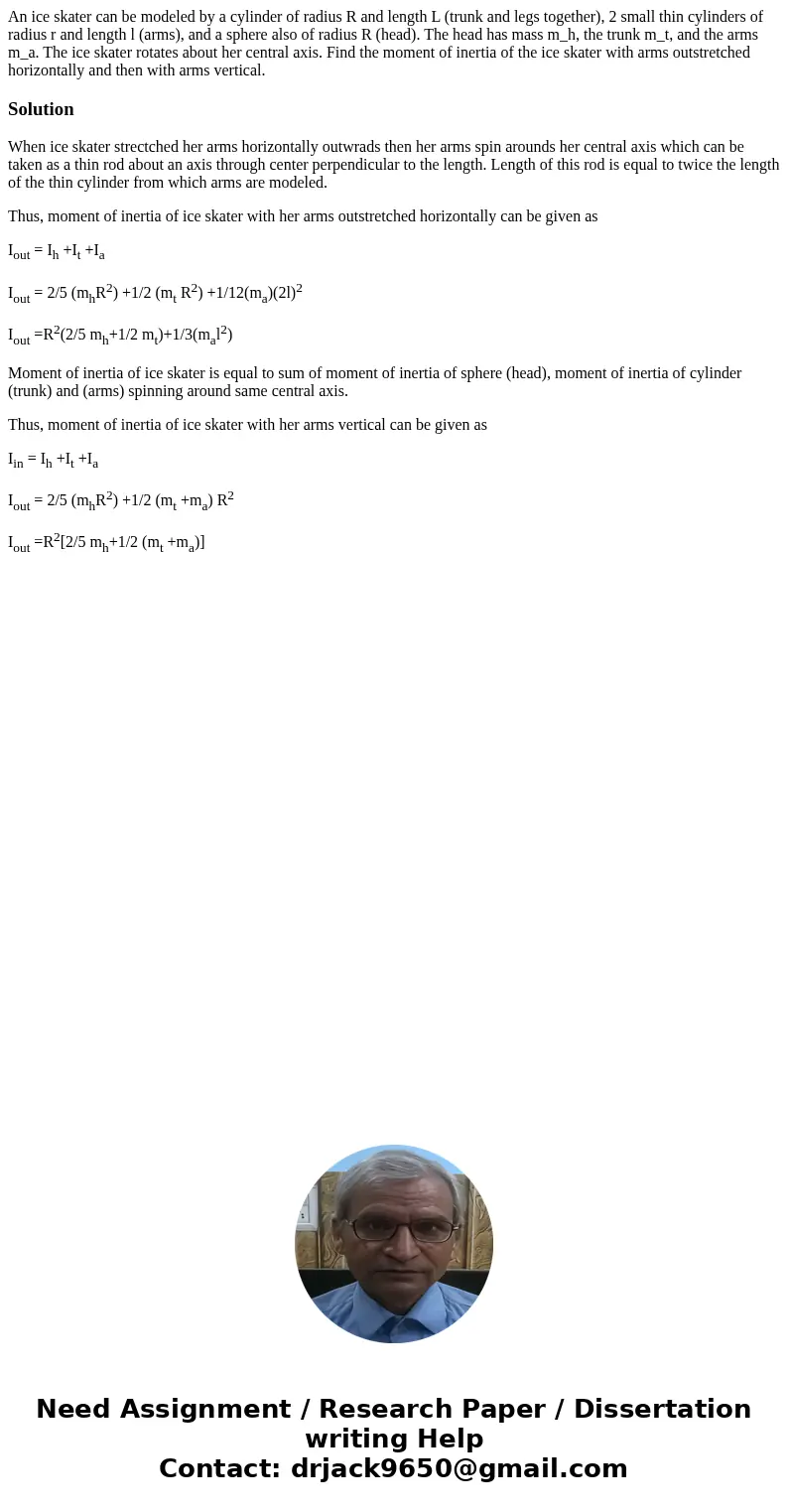An ice skater can be modeled by a cylinder of radius R and l
Solution
When ice skater strectched her arms horizontally outwrads then her arms spin arounds her central axis which can be taken as a thin rod about an axis through center perpendicular to the length. Length of this rod is equal to twice the length of the thin cylinder from which arms are modeled.
Thus, moment of inertia of ice skater with her arms outstretched horizontally can be given as
Iout = Ih +It +Ia
Iout = 2/5 (mhR2) +1/2 (mt R2) +1/12(ma)(2l)2
Iout =R2(2/5 mh+1/2 mt)+1/3(mal2)
Moment of inertia of ice skater is equal to sum of moment of inertia of sphere (head), moment of inertia of cylinder (trunk) and (arms) spinning around same central axis.
Thus, moment of inertia of ice skater with her arms vertical can be given as
Iin = Ih +It +Ia
Iout = 2/5 (mhR2) +1/2 (mt +ma) R2
Iout =R2[2/5 mh+1/2 (mt +ma)]

 Homework Sourse
Homework Sourse